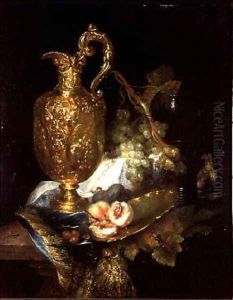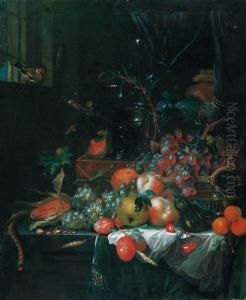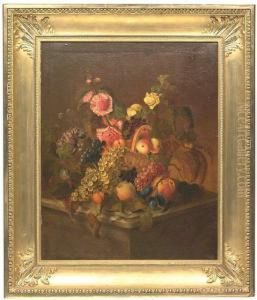Catharini Treu Paintings
Catharini Treu, born in Bamberg, Germany, in 1743, was a noted German painter who specialized in animal and still-life subjects, particularly known for her detailed and lifelike portrayals of animals. Her artistic journey began under the tutelage of her father, Johann Elias Treu, who was also an accomplished artist. This early exposure to art within her family set the stage for Catharini's development as a painter, allowing her to refine her skills from a young age.
Despite the limitations faced by women artists in the 18th century, Catharini Treu carved out a successful career for herself. Her work was well-received, and she gained recognition for her ability to capture the essence and character of her animal subjects with remarkable accuracy and sensitivity. Her paintings often depicted domestic animals, which was a popular subject among patrons of the time. Through her detailed brushwork and keen observation, she was able to convey not only the physical attributes of these animals but also a sense of their temperament and demeanor.
Catharini Treu's contributions to the field of animal painting were significant during her lifetime, and she remains a notable figure in the history of German art. Her work is characterized by its technical skill, its attention to detail, and its emotional depth, qualities that have ensured her a lasting legacy in the world of art. Though not as widely known today as some of her contemporaries, Treu's paintings continue to be appreciated for their beauty and realism. She passed away in 1811, leaving behind a body of work that continues to be studied and admired by art historians and animal lovers alike.



